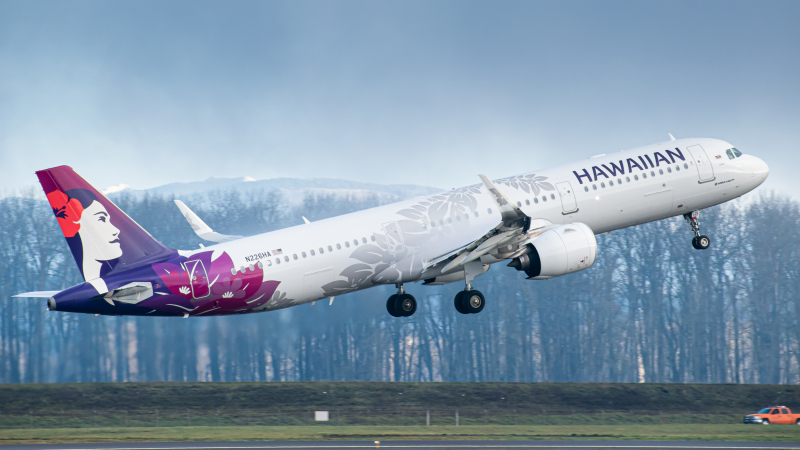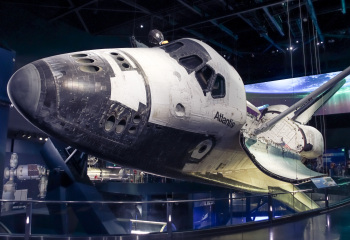Recently, American aerospace company SpaceX launched two Falcon 9 rockets into space, creating an amazing “candlelight” spectacle in the skies over the Southwestern United States. The rockets were carrying a payload of SpaceX “Starlink” satellites into orbit.

On Sunday June 23, SpaceX conducted two Falcon 9 rocket launches. The first launch out of Cape Canaveral Florida occurred at 13:15 EST. The launch went smoothly to little fanfare besides the usual SpaceX YouTube live stream and general space enthusiast excitement.
The second Falcon 9 rocket launch occurred at Vandenberg Space Force Base around 20:00 PST and went down in much the same manner. Due to the second launch occurring in the evening, observers on the ground watching the SpaceX launched were treated to a peculiar sight.
Ordinary Launch, Stunning Views
When Arizonans were observing the SpaceX Falcon 9 launch, they noticed that the exhaust left behind by the Falcon 9’s engines appeared to be glowing an eerie white-green color in the evening sky.
This glowing effect was not caused by the Falcon 9 rocket engines burning brightly, but rather by “The Twilight Phenomenon”. The Twilight Phenomenon occurs when rocket engine exhaust condenses, freezes and expands into ice in the upper atmosphere. This exhaust is then illuminated by sunlight that is still reaching the upper atmosphere, but not reaching the Earth’s surface due to the curvature of the Earth. This sunlight is then dispersed by the newly formed ice into different colors depending on the altitude of the crystalized exhaust and the angle at which the sunlight hits the ice.
This explains why the exhaust trail left behind by the Falcon 9 rocket appeared to be glowing with light despite it being the late evening and night-time on the ground.
What is Starlink?
The Starlink program is SpaceX’s bid to provide world-wide, unrestricted internet access to people around the world who currently don’t have access to high speed internet. SpaceX aims to do this by placing hundreds of their internet-providing satellites into low-Earth orbit in a “constellation” (Multiple satellites orbiting in the same predetermined orbits). All someone needs to do to connect to Starlink (once they’ve paid of course) is to set up a Starlink internet router and connect their phone to the network - quite similar to what is already done with Wi-Fi routers today.
SpaceX currently offers Starlink to residential consumers for a price of $120 per month for unlimited data. On top of this, SpaceX also charges consumers an “equipment fee” of between $599 and $2500 depending on the plan. For home internet, this is quite pricey.
When it comes to airlines, however, the appeal of Starlink as compared to other satellite internet providers comes from the fact that Starlink aims to cover almost every part of Earth with high speed internet. On top of this, Starlink also provides higher upload and download speeds when compared to traditional airline Wi-Fi providers such as T-Mobile or Gogo.

Due to these reasons, many airlines have taken interest in partnering with Starlink to provide on-board Wi-Fi. So far, SpaceX has announced deals with Hawaiian Airlines, airBaltic, Zipair and Qatar Airways to provide free inflight Wi-Fi in the future. The biggest partnership yet has been with Hawaiian Airlines. In April of 2024, the airline finished outfitting their fleet of A321neo aircraft with Starlink Wi-Fi.
Passengers Encounter Bedbug Infestation on Multiple Turkish Airlines Flights » Emirates Dismisses Viral A330 Plane Crash Video as "Fabricated and Untrue" » Could You Survive a Plane Crash? The Unlikely Science of Plane Crash Survival »
Comments (0)
Add Your Comment
SHARE
TAGS
STORIES Space SpaceX Falcon 9 Rocket Launch Phenomenon Hawaiian Zipair airBaltic Qatar Airways Wi-FiRECENTLY PUBLISHED
 Could You Survive a Plane Crash? The Unlikely Science of Plane Crash Survival
With air travel consistently being heralded as the safest form of public transport, most of us do not board a plane pondering our chances of survival in the event of a crash. But, is it possible to survive one?
INFORMATIONAL
READ MORE »
Could You Survive a Plane Crash? The Unlikely Science of Plane Crash Survival
With air travel consistently being heralded as the safest form of public transport, most of us do not board a plane pondering our chances of survival in the event of a crash. But, is it possible to survive one?
INFORMATIONAL
READ MORE »
 Maldivian Airlines Introduces First-Ever Widebody Aircraft, Plans New China Flights
Maldivian, the government-owned national airline of the Maldives, has just welcomed its first-ever wide body aircraft: the Airbus A330-200. With the new aircraft, the carrier also plans brand-new long haul international flights to China.
NEWS
READ MORE »
Maldivian Airlines Introduces First-Ever Widebody Aircraft, Plans New China Flights
Maldivian, the government-owned national airline of the Maldives, has just welcomed its first-ever wide body aircraft: the Airbus A330-200. With the new aircraft, the carrier also plans brand-new long haul international flights to China.
NEWS
READ MORE »
 Thousands of Flights Impacted as Winter Storm Blair Hits U.S.
Winter Storm Blair has unleashed a huge blast of snow, ice, and freezing temperatures across the Central and Eastern United States.
As of Sunday afternoon, over 6,700 flights and counting have been disrupted. This includes cancelations and significant delays leaving passengers scrambling to change flights and adjust travel plans.
NEWS
READ MORE »
Thousands of Flights Impacted as Winter Storm Blair Hits U.S.
Winter Storm Blair has unleashed a huge blast of snow, ice, and freezing temperatures across the Central and Eastern United States.
As of Sunday afternoon, over 6,700 flights and counting have been disrupted. This includes cancelations and significant delays leaving passengers scrambling to change flights and adjust travel plans.
NEWS
READ MORE »





